08 January, 2024
home

What should the house be like? Primarily, safe and cosy. It should provide peace, comfort and perfect conditions not only for work, but also for relaxation. All this is obvious, but creating a proper atmosphere in the house could be a tough challenge. One of the particular goals you need to achieve is the optimal temperature inside the house. How warm should it be, on what it depends, what are the consequences of the wrong temperature, and how to get its perfect level?
Asking this question in the largest search engine in the world results in receiving an answer right away: the proper temperature in a flat, house or office should be between 68-72°F.
For sure, at this moment, a part of you, readers, are nodding with approval, a cold shiver is running through some of you, and many of you are undoing the buttons under your neck, feeling hot all of a sudden. Thermal comfort is a highly individual thing.
If you read through more results, you find other ranges. The "American Heritage Dictionary" agrees that room temperature, meaning the temperature at which we are thermally comfortable, is 68–72°F. However, the "Oxford English Dictionary" states it is precisely 68°F. On the other hand, in the World Health Organization (WHO) sources, you find that the thermal comfort temperature is "at least 64°F" and no upper limit is given. The French Agency for Environment and Energy Management (Ademe) offers yet another opinion, insisting on precisely 64°F. But you can presume that they care more about saving energy resources than the actual comfort of residents.
Precise analysis of all sources lets you prove any thesis, provided the temperature falls within the range of 59–77°F.
The optimal temperature in a house is often offered as a scientific fact, even though it is not so, as proven by the degree of disagreement between the sources.
The house temperature, which makes you feel good, depends mainly on three factors:
i.e. who you are and what you are doing or want to do. Physical activity warms you up, helping you cope with lower temperatures but making it harder to suffer higher ones.
Before proceeding to determine the optimal temperature precisely, let's find out what happens to your health when you stray from your comfort zone.

The proper house temperature is the temperature that makes you feel good, makes your muscles work at peak capacity, and lets you act without the discomfort of sweat dripping off your brow.
Everyone has certainly been in an environment that is too warm for them. Even if you don't turn up the heating in your home excessively, the summer sun does it for you. Provided you don't use the right glass and window coverings or install air conditioning in your home.
The first symptom is always a feeling of discomfort and fatigue. As humans are warm-blooded animals, your body requires a specific temperature for all internal processes to run optimally. Naturally, it tries to ensure it is always the case. In the event of overheating, cooling processes are triggered.
In particular, this is sweating, associated with general unpleasant sensations and sometimes with an even worse smell. You feel tired, lack motivation to do things and have problems concentrating. On the other hand, you may develop a dry mouth. It also raises the risk of upper respiratory diseases.
People with circulation problems may start accumulating water in the body, which can be dangerous.
When the temperature inside the house is significantly above your personal optimum, you can't sleep. When the overheating is slight but prolonged, sleep quality decreases significantly. The process of falling asleep elongates, and the phases of sleep shorten, making you wake up feeling sleepy.
The sleeping body's defence response to excessive heat is frequent and unconscious changes in its position. A partner fidgeting in their sleep is often a decisive argument for compromising on lowering the temperature in the bedroom.
If the temperature of a room, in which one stays for a long time without engaging in intensive physical activity, falls below 61°F, the body starts to defend itself. Because this is far too low a level. These considerations are relative; others experience negative phenomena when the house temperature is a few degrees higher. The effect is more potent when it stays at that level for a long time.
At this point in the text, it is essential to note that the above applies to temperatures slightly below what one defines as a comfortable temperature for oneself. Living in cold rooms is devastating for the body. It drastically increases the risk of grievous infections and affects the cardiovascular system. The resulting stress can increase mental disorders.
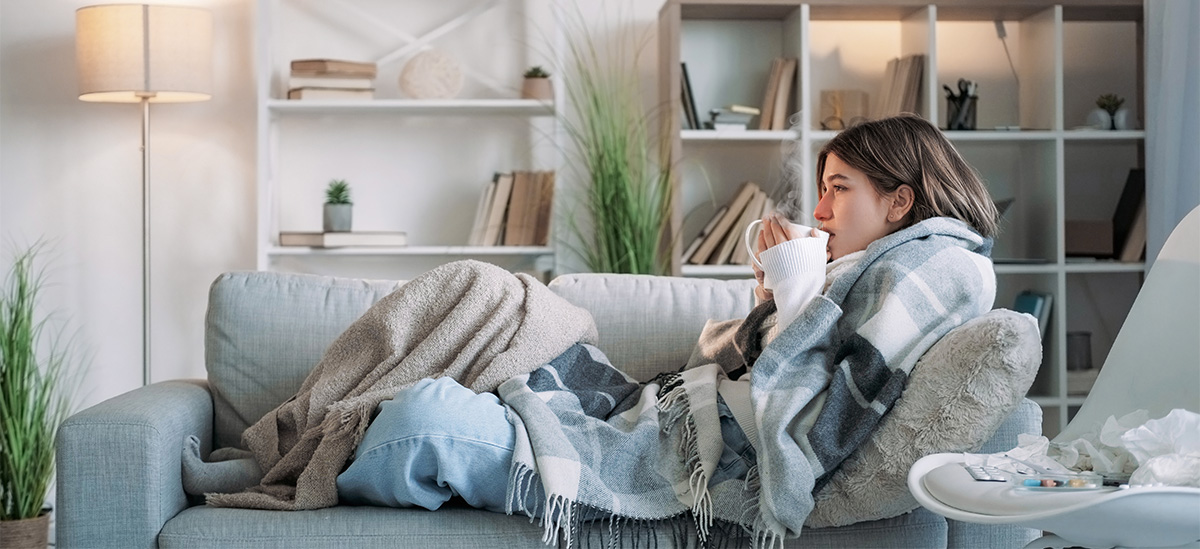
On a day-to-day basis, you only risk catching colds due to reduced circulation in the capillaries, which affects the body's initial defence response. When it is cold, a body starts fighting bacteria and viruses only when they already have a foothold.
The contraction of blood vessels raises blood pressure. Long-term hypertension, even at a low level, increases the risk of serious cardiovascular diseases.
Just as when it is too warm, chill reduces the body's efficiency. It is a myth that cold weather helps with weight loss because of the increased expenditure on raising the body's temperature. In reality, you feel unwell, your body goes into energy-saving mode, you are lethargic, in a bad mood, and don't feel like doing anything.
The effect of the body switching off is well demonstrated in intelligence studies. Tests performed in chilled-out rooms always give worse results than in places where care has been taken to set the optimum temperature.
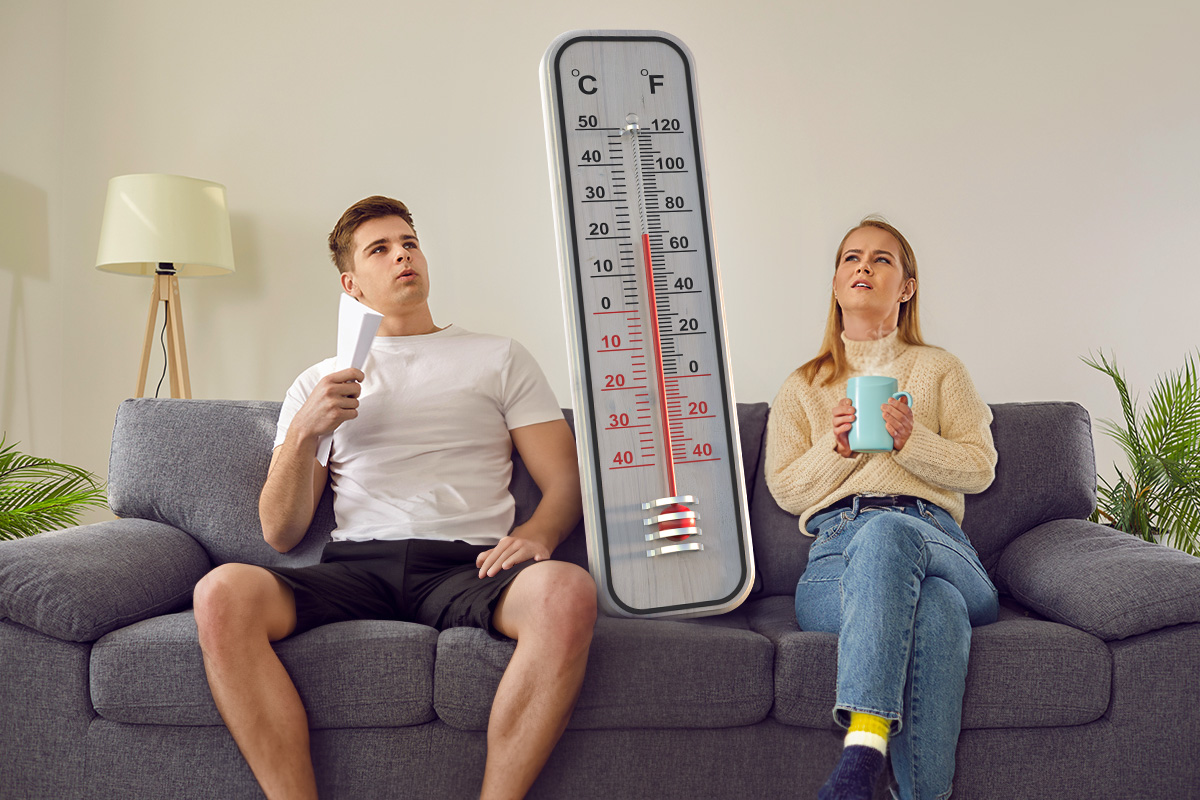
A comfortable home temperature is subjective. It depends on who you ask. What does it mean in practice?
Every office worker knows very well that with the arrival of summer, the arguments over the air conditioning setting start. Men always want a few degrees fewer than the ladies. The phenomenon is normal and does not depend on clothing, or at least not solely on clothing, as the corporate dress code usually offsets these differences.
The most commonly quoted temperature optimum, 68 to 72°F, is mainly rejected by women, for whom it is sometimes too low. Perceptions change depending on the time of day, and even hormones influence them, but you can safely speculate that the ideal ambient temperature for ladies is, on average, around 3 degrees higher than that considered thermally comfortable by gentlemen.
As warm-blooded animals, humans need a constant internal temperature to function well. Such constancy is highly conventional, as 98°F, considered the norm, is a level people seldom experience. It is usually a little less or a tad more, depending on the time of day. In the morning, the temperature can drop as low as 93°F, which is normal. Intense exercise carried out around midday, on the other hand, can raise it just as much.
For older people, internal temperature control is challenging. Their metabolism is slower and less efficient, so unlike young people, they struggle to maintain the proper body temperature. Paradoxically, while hot weather poses a distinct danger for them, their temperature optimum is higher.
If you ask a senior what the temperature in the house should be, they likely answer that it should be low. They want to reduce heating costs but feel comfortable only at 73–75°F. For an older lady, it may be an even minimally higher temperature.
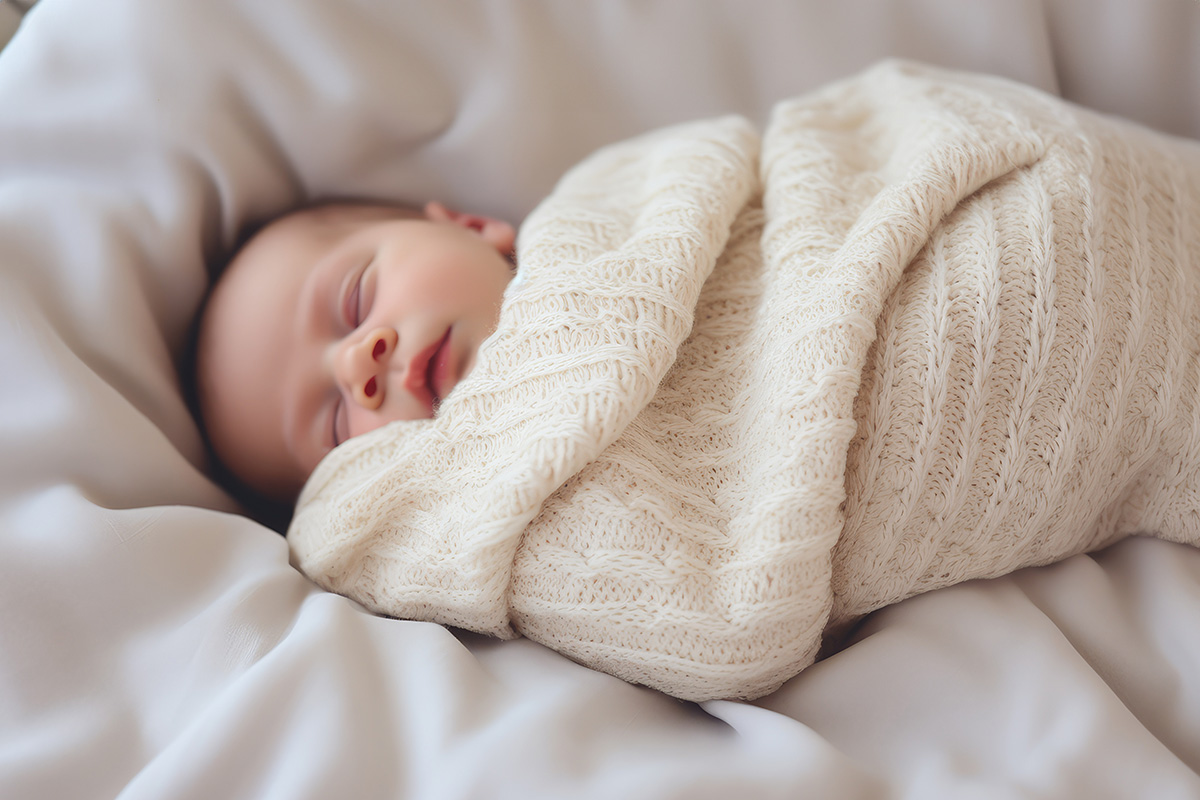
Parents very often ask what is the best temperature for a newborn baby. Unfortunately, the traditional answers here are usually incorrect because they say that a flat with an infant needs to be heated more. There is no truth in it.
How warm should it be with a newborn baby? Just like without it, or even a little cooler. Doctors recommend 68–70°F in daytime and 2–3 degrees less at night. Higher temperatures are one of the prime causes of babies' restlessness and their difficulty sleeping through the night. Parents mean well, raise the temperature and inadvertently harm themselves and their children.
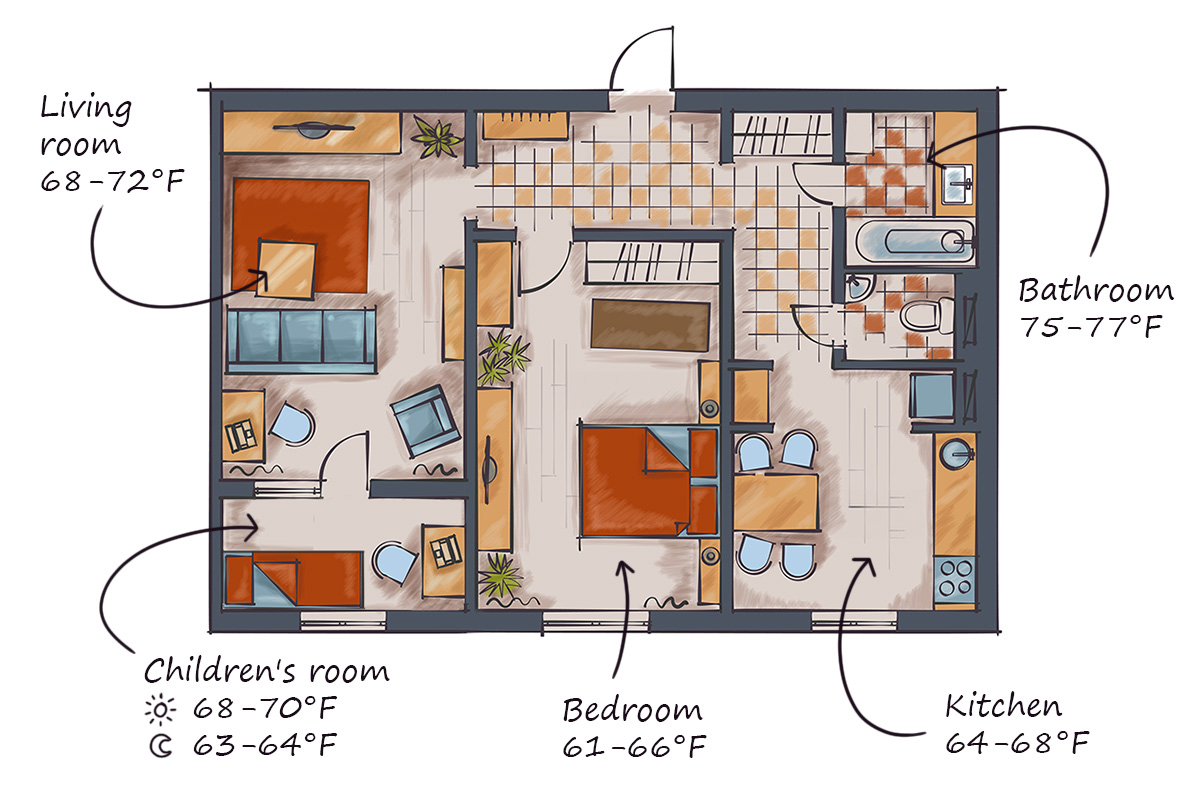
With all said so far, you can approximate thermal optima for different parts of the house. The ideal temperature always depends on its occupants, but indicating a starting point is not difficult.
We tend to be very active in the kitchen. In addition, our activities generate a lot of heat from the oven or a stovetop. Therefore, the best temperature for the various rooms is usually higher than the kitchen temperature, which is 64–68°F.
The ideal temperature in the various rooms is typically calculated under the assumption that you are dressed and spend an extended time there. It is different from the bathroom. Setting the optimum temperature must include that you are just getting out of the shower or bath, have nothing on, and wet skin cools down quickly. For this reason, it should be 3–4°F higher than in other parts of the house. At least after a bath.
The temperature in the children's room depends on their age. Older children may have it a little cooler. Here, it is vital to control the temperature constantly, as it is both a living room and a bedroom. The optimal temperature for a child's bedroom is 63–64°F, while during the day it is 68–70°F.
A pleasant air temperature in the living room, considered the general norm, is 68–72°F. Moderate physical activity is assumed there.
The healthiest sleeping temperature for an adult is between 61-66°F. Women fall at the upper end of the range, and children at the lower end. The ideal sleeping temperature for older people is not at all higher than for other household members.
The home should be an oasis for you, sealing you off from your surroundings and keeping you comfortable regardless of what is happening outside. It is never the case that you only stay indoors all the time, so your body adapts to the season and the associated aura.
How does this translate into the temperature at home?
Throughout the year, humidity is an essential issue. In summer, you are at risk of excessive humidity due to the ability of warm air to absorb large amounts of water vapour. When the temperature drops even slightly, the vapour precipitates as water, and you experience discomfort.
In winter, on the other hand, artificially warmed air quickly heats up and becomes dry. As a result of this phenomenon, the mucous membranes dries out, which leads to worsened immune response. It is worth paying attention to this, as going out into the cold further reduces your ability to fight off infections, resulting in a flourishing flu season.

Now that you know, at least indicatively, what the temperature in your home should be, you need to think about how to achieve it. Fortunately, this is not particularly difficult, as long as you can use modern technology. However, there are also pitfalls here.
You need to look at three issues in particular:
Why ventilation? Because the healthiest temperature in the home must be described also in terms of humidity.
When the interior temperature is above general optimum levels, the humidity should be 30-60%. When it is below these values, it should be considerably higher and reach at least 50%. However, it must not exceed 90%, as this is when water precipitates out of the air.
Heating the home is most efficiently achieved through central heating systems. These use a variety of fuels and energy sources and then distribute them throughout the building.
The most common heat sources for central heating are:
They all have advantages and disadvantages, which are irrelevant topics regarding a comfortable temperature in the house. You should expect them to be sufficiently powerful to provide the necessary energy to achieve the desired temperature. More significant is temperature control, for which heat conservation is decisive.
A comfortable temperature in the home is largely a temperature that is constant over time and equal in all parts of a given room. You already know that the right home temperature is not the same everywhere because the healthiest level for sleeping and in bathrooms (at which you won't catch a cold) are two completely different issues.
There must be no draft from the windows, it is not noticeably colder at the door than in the rest of the room, and a thermometer set away from the radiator has a chance of showing the temperature you are aiming for. To achieve this, you must ensure airtightness and good thermal performance of several building elements. These are mainly:
Well-insulated walls, a roof without thermal bridges, an insulated floor, warm and airtight windows and doors, together with a garage door featuring the Thermo feature, guarantee the possibility and full feasibility of maintaining a constant, even temperature in the rooms.
A separate category is proper ventilation, which is essential for the interior temperature and a decisive factor for the perceived thermal comfort.
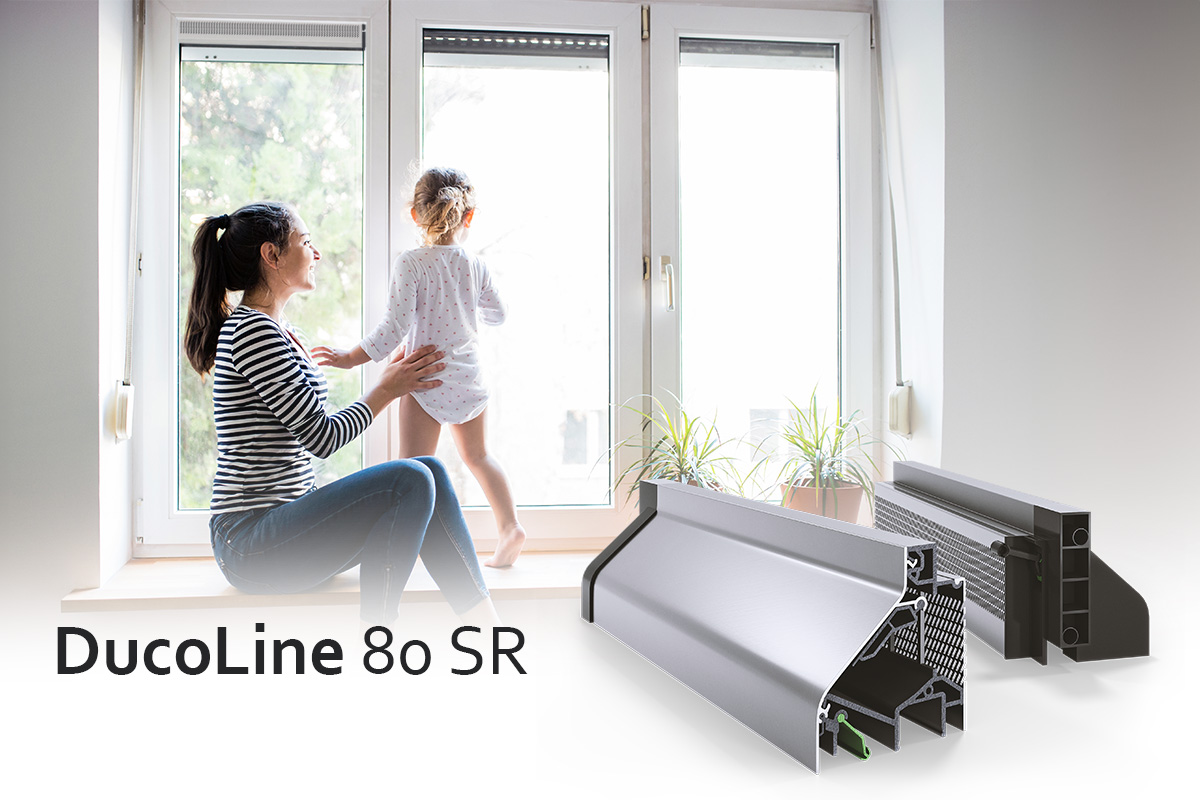
Contrary to common belief, air carries very little thermal energy. It is even an insulator used in, for example, chambers of glazing units to reduce their thermal transmittance. It is even sometimes said to be warm, but it is a dry heat, so it is not overly oppressive.
You may perceive the room temperature as too high if the humidity rises significantly or too low if it drops sharply. And the thermometer reading does not change.
To ensure a room is not too warm or cold, you need effective ventilation that offers air exchange and balances the humidity. There are two predominant ventilation systems in use today:
Gravity systems are less complex, usually sufficient, and do not require any additional investment. However, if the building had been insulated or renovated, or if the joinery had been replaced with much more efficient equivalents, it may no longer be adequate. The thermal comfort of the occupants suffers, and sometimes dampness may even appear in the interior.
You can improve ventilation in many ways. One example is converting it to a mechanical system, and another - to install air inlets in the windows.
It is hard to resist the impression that the optimum home temperature is a complex subject and that the perfect temperature is an idea not only problematic to realise but even to define. In reality, it's not so challenging because the best temperature in the house is felt by us all the time, and if you're too cold, you can raise it a bit, and if you feel too hot, you can lower it. The fundamental thing is not to ignore the impact of temperature on your body and to be prepared to manage it accordingly.

Hotline: +48 539 697 779 Connection fee in accordance with the operator`s price list.
Eko-Okna S.A.
Kornice, ul. Spacerowa 4
47-480 Pietrowice Wielkie
NIP: 6391813241, KRS: 0000586067